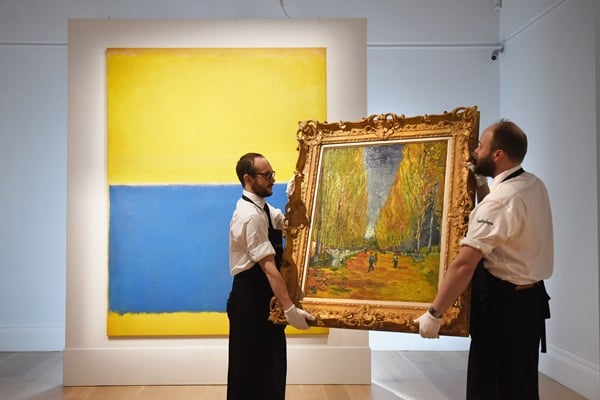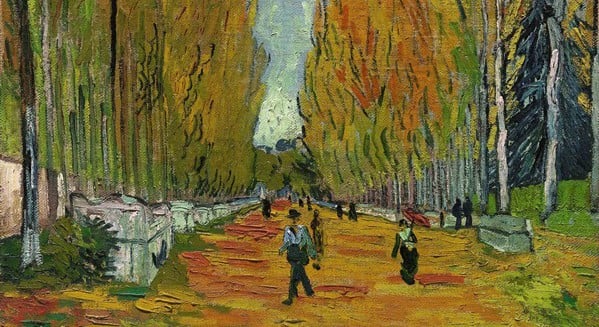Analysis
Will Chinese Financial Turmoil Sink the Global Art Market?


Eileen Kinsella


An unknown Chinese buyer paid $66.3 million for Van Gogh’s, L’Allée des Alyscamps (1888) this past May.
Photo: Courtesy Sotheby’s.
On Monday the Shanghai Composite Index had its worst day in eight years, plummeting by about 8.5 percent.
An artnet report released on July 22 showed that the Chinese art market had witnessed a dramatic decline in the first six months of 2015. The market is down 30 percent, to $1.5 billion.
So it is only natural to wonder if the financial trouble is going to affect the much-talked about trophy buying of wealthy Chinese collectors at auction. Demand from Asian buyers has often been cited as a key part of the global art market boom. Will it weigh on international auction markets? Maybe.
Several reports that raised the issue this week with art experts seem to come away with a relatively mild level of concern since the market is so global nowadays. However, some caution that psychology is nonetheless a key part of confident buying or lack thereof. For instance, CNBC reporter Robert Frank has an excellent report today titled “Here’s How China Could Crash the Art Market.”
He notes that this past May, at a Sotheby’s evening Impressionist sale, three Chinese buyers accounted for $116 million of the $368 million total, for just three lots. What happens if you remove such a major factor from the market?
“I think there will definitely be an impact,” former Christie’s chair of Asia, Ken Yeh tells Frank.
To date, this effect has largely been confined to the local art market in China, and Chinese demand for Western art seems to be largely undaunted, despite any ripples in the market. As author Shaun Rein writes on CNN, “Chinese are looking to buy items that are one of a kind.”
Citi Private Bank’s head of the Art Advisory & Finance Group, Suzanne Gyorgy, told Frank that this is because the super-rich who collect such trophies are less affected by the vagaries of the market. She also remarked that since Chinese collectors have turned their attention to Western artworks, the drop in domestic Chinese sales is not necessarily a harbinger of weakness in the New York and London markets.
And amid the numerous comparisons to the art market crash of 1990 that was sparked in large part by speculative Japanese buying, Gyorgy and others note the much broader global base of wealthy buyers nowadays, so that the market is not dependent on a small slice of art patrons.
This is good news right? Not entirely, says Gyorgy, noting the importance of psychology in market confidence.
“Art is as much a psychological market as a financial one. If there is one sale that isn’t strong, people get spooked.”
To this end, all eyes will be on the next major round of Impressionist, modern, and contemporary sales in New York this November. This was the case in late 2008, when all it took was an extremely jittery evening Impressionist sale—at which a $25 million Van Gogh painting was left stranded on the auction block—for the art market to fall into an albeit short lived tailspin before it quickly rebounded.
In other words… sit tight.
Related stories:
artnet Report Shows Decline in Global Auction Market
The Art Money 20: Which Artists Have Performed Best at Aucton Since 1995?
Mysterious Asian Buyer Causes Sensation at Sotheby’s $368 Million Impressionist Sale